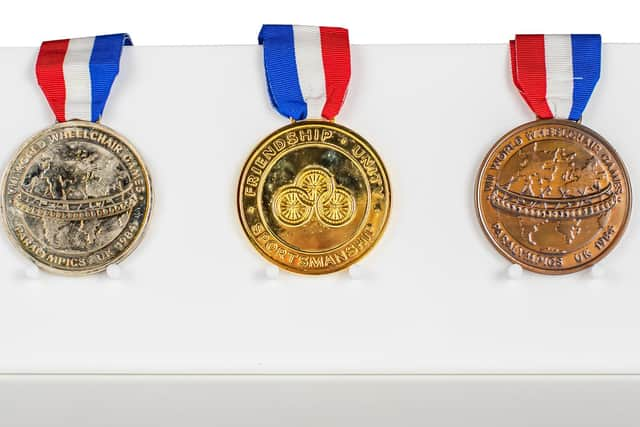How the Paralympics marathon event has evolved since pivotal 1984 games in Aylesbury
and live on Freeview channel 276
In our final article in a series that has reflected on the ‘Last-minute Paralympics’ hosted at Stoke Mandeville in 1984 after Illinois pulled out with just weeks to go, we’ll reflect on the legacy that remains to this day.
Our first article coincided with the London Marathon in April looking at many memories of wheelchair marathons (not only 1984 but remembering some stories from 2012). The article reflected on how the 1984 Games introduced the wheelchair marathon. This event has become such an eagerly anticipated event in subsequent Paralympic Games all thanks to Stoke Mandeville’s introduction.
Advertisement
Hide AdAdvertisement
Hide AdWhile 1984’s marathon in Stoke Mandeville was an event for wheelchair athletes, subsequent Games have opened up events to a wide range of disability


classes. In 2020 in Tokyo, a men’s marathon was held for visually impaired athletes and amputees running on prosthetics, as well as the original wheelchair race, while women competed in the visually impaired and wheelchair categories.
Further alignment of the Paralympics continued after 1984. There was huge controversy in the USA’s original bid led by the American National Wheelchair Athletics Association (NWAA) to host a Games for wheelchair athletes only. One of the reasons the NWAA gave for this segregation was that they didn’t recognise the mutual social benefits of integrating the different classes of disability. Such views subsequently evolved and since 1988 in Seoul the Summer Paralympics has always been held in the same city as the Summer Olympics, two weeks after the non-disabled Games finish.
The Paralympic Games now includes several categories covering different types of physical, visual and intellectual impairments with various levels within these categories.
Advertisement
Hide AdAdvertisement
Hide AdWe really enjoyed talking to Liam and Janette Redrup, who volunteered as teenagers at the 1984 Games in various capacities (ranging from holding the medals at ceremonies to helping run discos in the marquee at Stoke Mandeville). Liam and Janette went on to marry, a wonderful legacy in itself but it was heartwarming to hear they are still in touch with people they met all around the globe.
In previous articles we detailed the unforgettable sights and experiences they saw during the international tournament.
The final word should go to the people of Buckinghamshire and recognising the impact that the community had on the future of the Paralympic Games. In recognition, the community will be invited to celebrate 75 years of the Paralympic Games at the historic Stoke Mandeville Stadium on Friday 28 July this year, when the Stories from Buckinghamshire project officially reaches its finale.
This will be an opportunity to bring the community together to enjoy a variety of different activities in celebration of the positive legacy that the home of the Games stands for.
Advertisement
Hide AdAdvertisement
Hide AdIf you have a story to tell the National Paralympic Heritage Trust would like to hear from you. Please contact us via email here or telephone: 01296 489929.
The “Stories from Buckinghamshire” project is gratefully supported by the HS2 Community Fund and the Thriving Communities Grant.